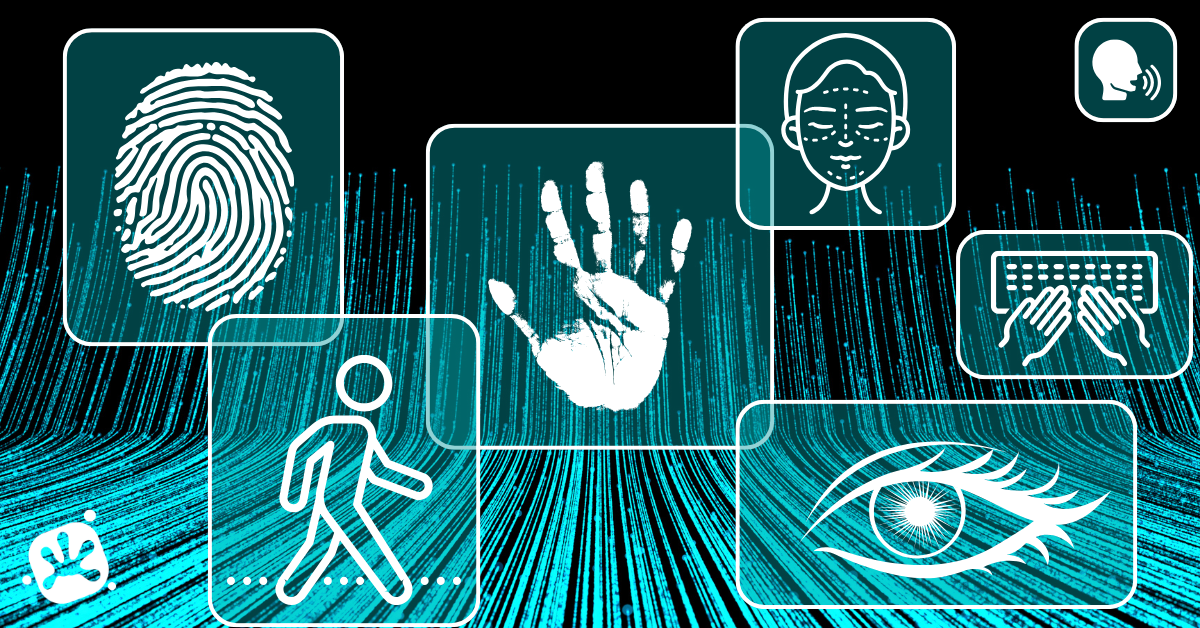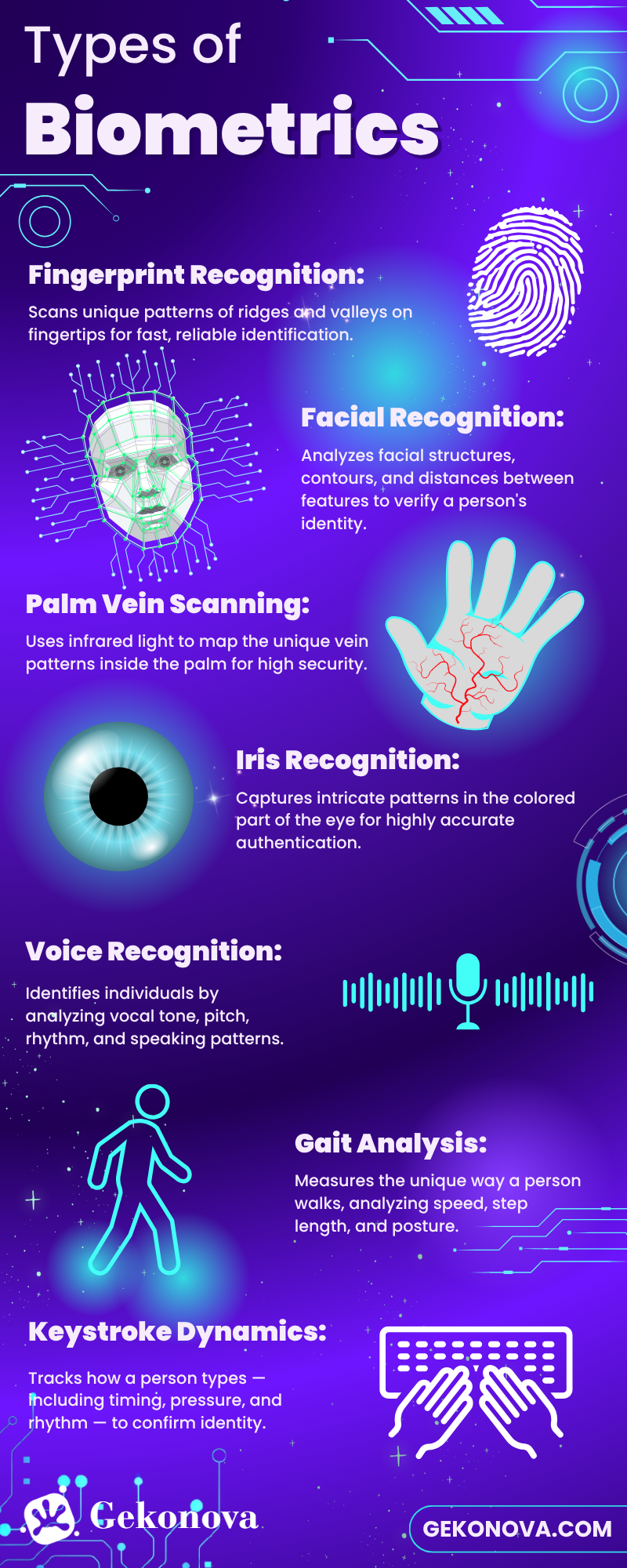Categories
In today’s digital landscape, robust identity verification is paramount. Multi-Modal Biometrics, integrating multiple identifiers like fingerprints, facial scans, and palm vein patterns, are redefining authentication with unmatched security and ease. At Gekonova, we lead the charge with advanced biometric devices tailored for modern security needs.
This article delves into the essence of biometrics, the strengths of multi-modal systems, and their transformative impact across industries, showcasing their role in a secure, user-friendly future.

Biometrics involve analyzing unique physical or behavioral traits to authenticate identities. Technologies like fingerprint scanning, facial recognition, and palm vein mapping convert these traits into digital templates for secure, accurate verification.
The global biometrics market is projected to reach $136.18 billion by 2031, per Allied Market Research, driven by the need for reliable alternatives to passwords or PINs, which are prone to theft or loss. Biometrics, tied directly to an individual, offer a trusted, seamless solution for identity verification.
Biometrics encompass physiological and behavioral characteristics, providing diverse methods for authentication. Unlike traditional credentials, these traits are unique to each person, enhancing security across applications.
Fingerprint systems analyze ridge and valley patterns on fingertips, valued for their affordability and proven reliability, making them a staple in widespread authentication.
Facial recognition maps unique facial features, such as eye spacing or jawline shape, using AI-driven algorithms to ensure real-time, accurate identity verification despite minor appearance changes.
Palm vein scanning uses near-infrared light to capture internal vein patterns, offering exceptional security due to their hidden, stable nature and contactless operation.
Iris scanning examines intricate eye patterns, achieving false acceptance rates as low as 1 in 1.2 million, ideal for high-security environments.
Voice recognition analyzes vocal traits like pitch and cadence, commonly used for remote authentication in banking or virtual assistant interactions.
Gait analysis tracks unique walking patterns, enabling unobtrusive authentication for security monitoring in sensitive facilities without direct sensor contact.
Keystroke dynamics evaluate typing patterns, such as speed and pressure, providing continuous authentication for cybersecurity applications during digital sessions.

Multi-Modal Biometrics combine multiple biometric identifiers—such as fingerprint, facial, and palm vein scans—into a single authentication process. For example, a system might require both a facial scan and a palm vein reading to grant access. This layered approach boosts accuracy, reduces errors, and thwarts fraud attempts.
Multi-modal systems also provide flexibility, allowing authentication via alternative modalities if one fails, such as using a facial scan when a fingerprint is unreadable due to injury.
Multi-Modal Biometrics offer distinct benefits, making them a preferred choice for secure authentication:
Multi-Modal Biometrics are transforming industries by delivering secure, efficient authentication solutions tailored to specific needs.
Multi-modal systems, integrating facial, fingerprint, and iris scans, streamline border control. The U.S. Global Entry program uses these to expedite traveler processing while enhancing security, reducing wait times by 60% at major airports.
Banks deploy multi-modal systems for secure transactions. Fingerprint and facial recognition protect mobile banking apps and palm vein is used at ATMs, cutting fraud rates by 40% in 2024, as seen in global banking trials.
Retailers adopt multi-modal systems for seamless payments. Amazon One’s palm recognition enables cardless purchases at 200+ U.S. stores, processing transactions in under 2 seconds.
Hospitals use multi-modal biometrics to verify patient identities, ensuring accurate treatment and securing medical records. Systems combining fingerprint and facial scans reduced medical fraud by 30% in 2024.
Single-modal biometric systems can falter due to environmental factors or physical changes, like dirty sensors or aging. Multi-Modal Biometrics counter these issues by cross-verifying multiple traits, ensuring robust authentication.
For instance, a smudged fingerprint scanner can be bypassed with a palm vein scan, while stable vein patterns complement facial recognition changes over time. This approach achieves match rates of 99.99%, making it ideal for high-stakes environments like banking or border control.
The future of Multi-Modal Biometrics is amplified by integration with advanced technologies:
Multi-Modal Biometrics are shaping a secure, efficient digital future, transforming authentication in border control, banking, retail, and healthcare. By combining fingerprint, facial, and palm vein scans, these systems deliver unmatched accuracy and fraud resistance. At Gekonova, we’re committed to advancing biometric solutions with ethical, user-focused designs, ensuring readiness for tomorrow’s challenges. Multi-Modal Biometrics are not just an evolution—they’re the new benchmark for secure identity verification.